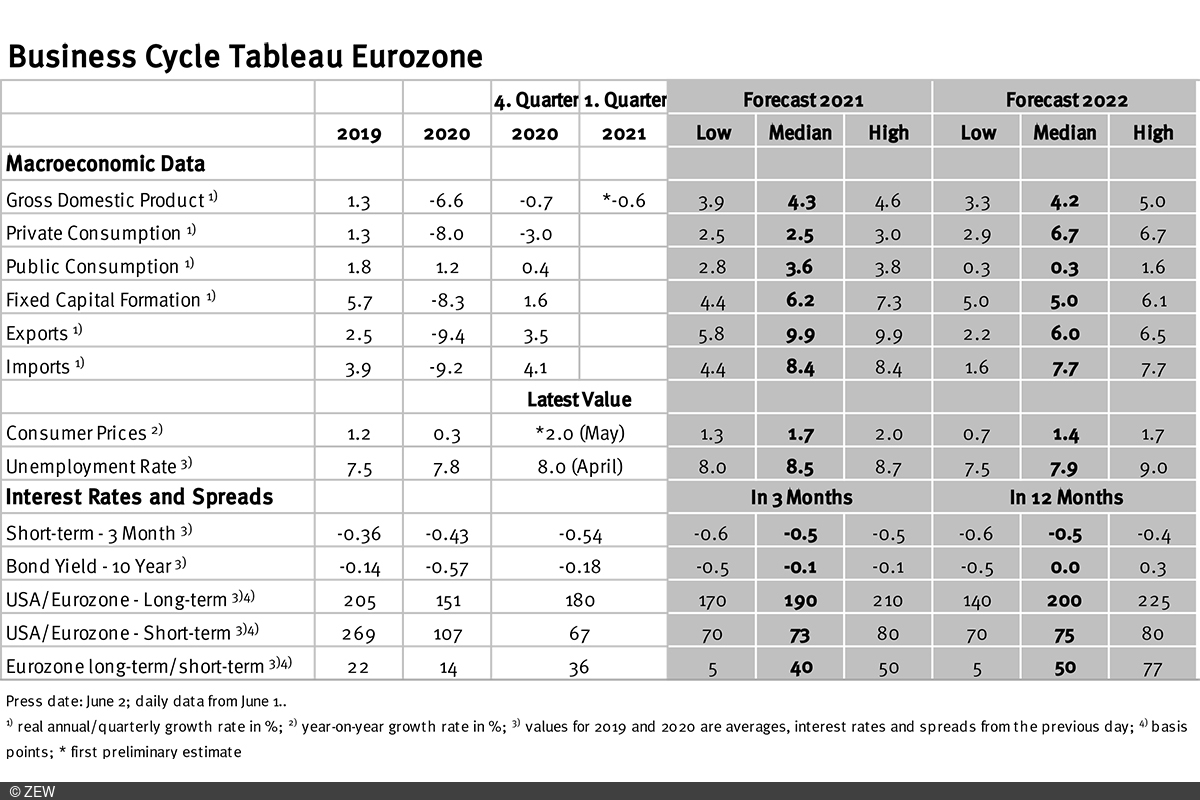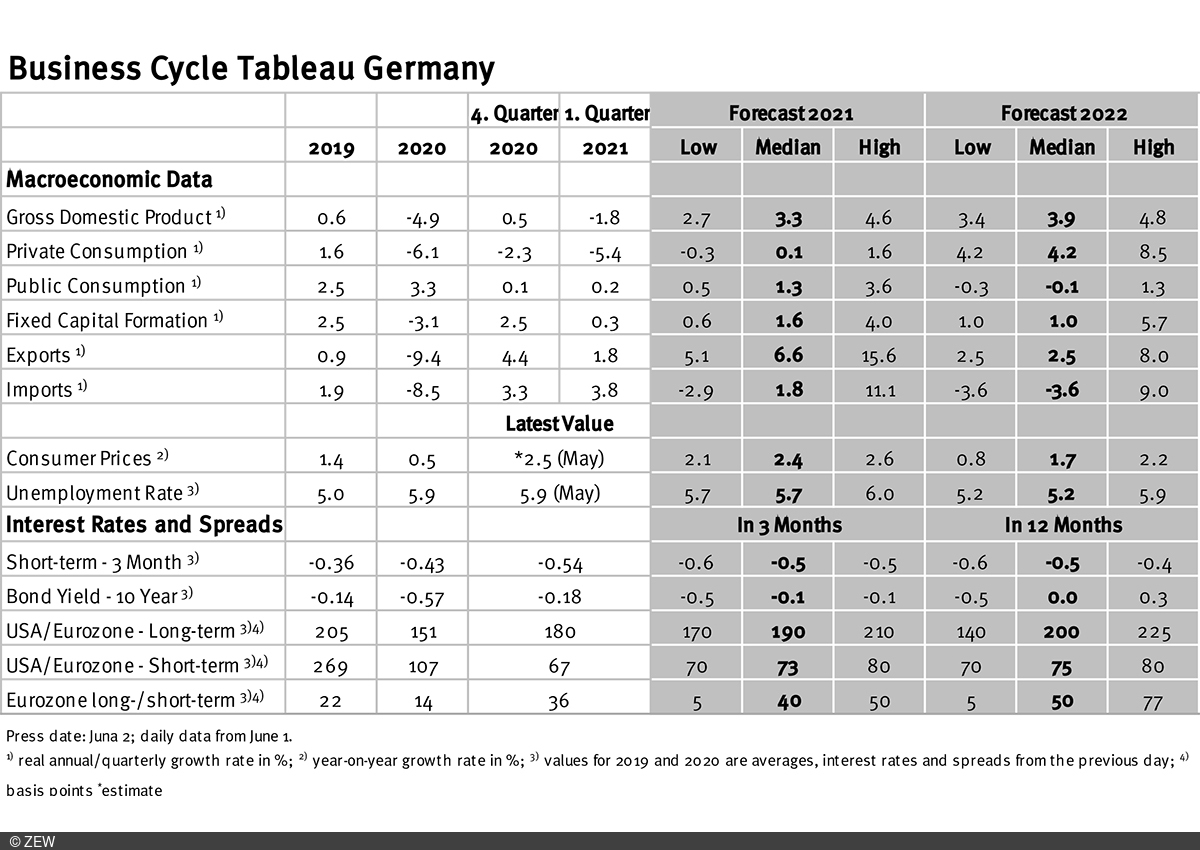Euro Area Economic Forecasts for 2021/22 Unchanged
Business Cycle Tableaus by ZEW and Börsen-ZeitungEconomists Anticipate No Further Rise in Inflation
Economic experts expect the price increases in the euro area to be temporary. They have scarcely changed their forecasts for economic growth in the euro area. For the German economy, they expect only below-average growth in comparison. This is the result of the business cycle tableaus by ZEW Mannheim and the German daily newspaper, Börsen-Zeitung.
The forecasts for economic growth in the eurozone have hardly changed. In June, the median forecast for real gross domestic product (GDP) growth for 2021 is 4.3 per cent, up from 4.2 per cent previously. For 2022, the forecast value remains unchanged at 4.2 per cent. However, the GDP forecasts for the German economy are falling slightly. They currently stand at 3.3 per cent for 2021 (previous month: 3.6 per cent) and at 3.9 per cent for 2022 (previous month: 4.0 per cent). Since German economic output declined less sharply than that of the euro area last year, the German economy could still come out ahead in a three-year comparison from 2020 to 2022. According to the available forecasts, Germany’s real GDP at the end of 2022 is expected to be 2.1 per cent higher than at the end of 2019, while the euro area’s real GDP is predicted to grow by only 1.5 per cent over this period.
Substantial price increases merely temporary
The price trend in the euro area and in Germany has accelerated noticeably since the beginning of the year. In May 2021, the inflation rate for the euro area stands at 2 per cent and thus exactly at the target value of the European Central Bank (ECB). In the months before, it rose quite significantly, from 0.9 per cent in January to 1.3 per cent in March and now to 2 per cent in May. However, the inflation forecasts have hardly changed compared to the previous month. Only the maximum value rose to 2.0 per cent for this year and to 1.7 per cent for 2022, while the median forecasts remain unchanged at 1.7 per cent (2021) and 1.4 per cent (2022).
According to the experts, a further significant increase in inflation is not to be expected. After all, a lower median value is already assumed for next year, and even the maximum forecast of 1.7 per cent for 2022 points to a slowdown in inflation dynamics. For the current year, however, the median forecast of 1.7 per cent would certainly allow for inflation rates of up to 3 per cent over the course of the year.
Adjustment of monetary policy advisable
If this forecast of inflation rates in the euro area proves accurate, the ECB would have no good reason to tighten its monetary policy. However, a transition to a less extremely loose monetary policy would be advisable to avoid an overshooting of inflation. A gradual scaling back of the bond-buying programmes would also be recommendable in order to restore the signalling effect of bond prices and yields. At present, government bond yields reflect the growth and inflation expectations of capital market participants only to a very limited extent.
Business cycle tableaus by ZEW and Börsen-Zeitung
In cooperation with Börsen-Zeitung, ZEW has been publishing monthly business cycle tableaus for Germany and the eurozone with economic key figures and forecasts since 2013. Numerous banks and institutes publish reports on the current and prospective economic situation at different intervals. The information relevant for the tableau is filtered out of these publications to compute a median, minimum and maximum of the available forecasts for the current and subsequent year.
The monthly tableaus show current GDP forecasts, its main components, consumer prices, industrial production, unemployment rate, short- and long-term interest rates, and interest rate spreads. The focus of the tableaus lies on national business cycle reports, which are complemented with forecasts from international banks and institutes. The tableau for the eurozone is enhanced by data from European banks and institutes.

